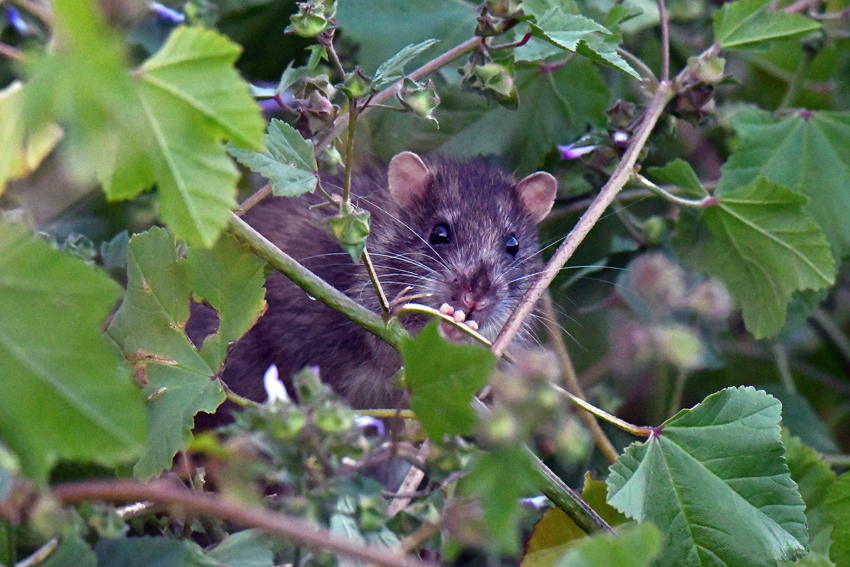Invasive alien species may be a bigger threat to natural World Heritage than previously thought
A new paper indicates that impacts on natural World Heritage sites from invasive alien species, such as house mice, Argentine ants and rainbow trout, may be greater than previously assessed. It presents results of a proposed framework tested in seven affected sites, recording the presence of more invasive alien species in almost all cases. The authors, a team of international scientists including from IUCN, call for improved monitoring and reporting as a first step towards more effective protection.

Norway Rat in the French Austral Lands and Seas, a World Heritage site in the subantarctic region
Photo: IUCN / Wendy Strahm
Natural World Heritage sites are recognised as the planet’s most significant protected areas, however they face increasing threats globally. Invasive alien species – non-native plants and animals that negatively impact an ecosystem – are the number-one threat to natural World Heritage sites, according to the IUCN World Heritage Outlook 2 published in 2017.
“Invasive alien plants and animals are a threat to healthy ecosystems on which the diversity of life on Earth depends, and can irreversibly damage many iconic World Heritage sites if we don’t act quickly,” says Bastian Bertzky, an Advisor to the IUCN World Heritage Programme and co-author of the research. “To protect natural sites from invasives, effective monitoring is crucial to track the introduction and spread of these species, and take necessary action.”
The paper, published in Biodiversity and Conservation, looks at the status of invasive alien species in natural World Heritage sites and how they are managed, based on UNESCO-IUCN monitoring reports and assessments from the IUCN World Heritage Outlook. According to the research, these reports and assessments identify 290 different invasive alien species present in World Heritage sites across the globe. Rats (Rattus spp.), cats (Felix catus), goats (Capra hircus), and the common lantana plant (Lantana camara) were the most frequently reported invasive alien species overall, with others such as rainbow trout, Argentine ants, house mice (Mus musculus) also commonly mentioned.
However, the paper outlines that while invasive alien species were listed as a threat for 119 out of 241 World Heritage sites, information on managing these species was unavailable for 40% of the affected sites. For those where information was available, reports on the status of species invasions were often inconsistent and hard to compare.
To address these concerns, the authors have developed a new framework for monitoring and reporting invasive alien species in World Heritage sites in a systematic way. This would generate quantifiable data, helping to identify funding priorities and ultimately increase protection of the sites.
The authors tested the framework in seven World Heritage sites in different regions. This resulted in identifying more invasive species in most of the sites, showing them to be a higher threat than is currently understood.
In Tanzania’s Serengeti National Park, the IUCN World Heritage Outlook assessed the threat of invasive alien species as ‘data deficient’, reporting the presence of four such species. With the new framework, 23 invasive alien species were identified and the threat level was assessed as high. In Spain’s Doñana National Park, 70 invasive alien species were identified using the framework compared with five previously reported – bringing the level of threat from low to high.
In Aldabra Atoll in the Seychelles, on the other hand, the paper found that the number of invasive species has decreased from seven to five thanks to successful eradication measures. Other World Heritage sites where the framework was tested include the Galápagos Islands in Ecuador, Kakadu National Park in Australia, Keoladeo National Park in India and Vredefort Dome in South Africa. This framework could also be used beyond World Heritage sites for other types of protected areas.
The IUCN World Heritage Outlook assesses the conservation prospects of natural World Heritage sites based on the state of the values for which they are inscribed, threats to these values, and effectiveness of protection and management. Updated every three years, its next release is planned for the later part of 2020.



